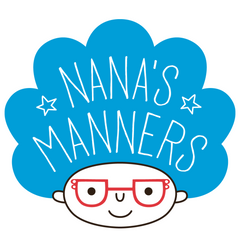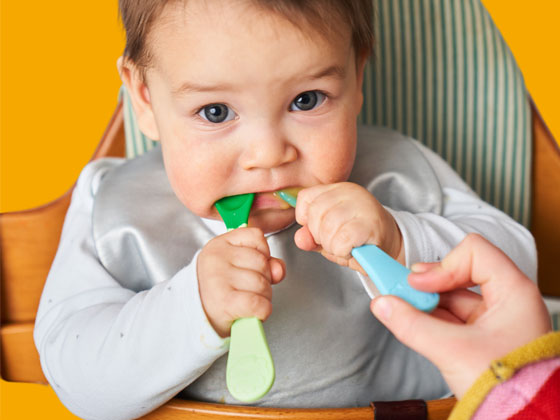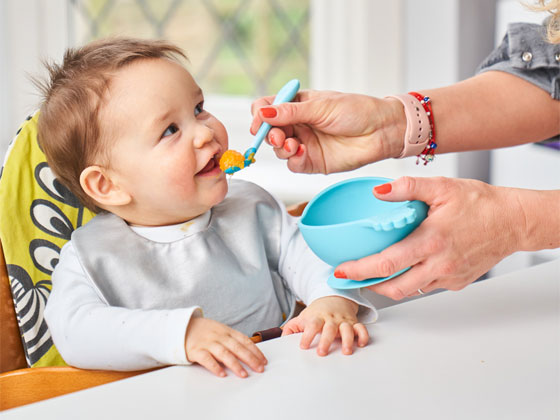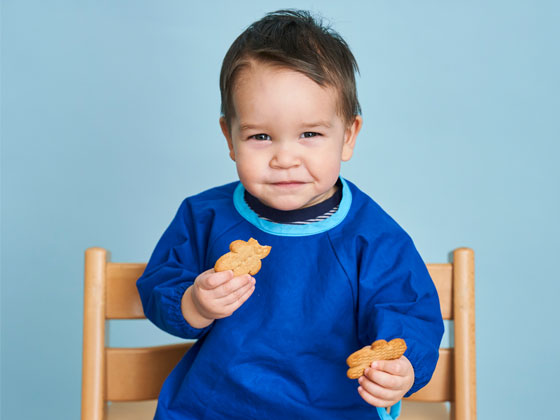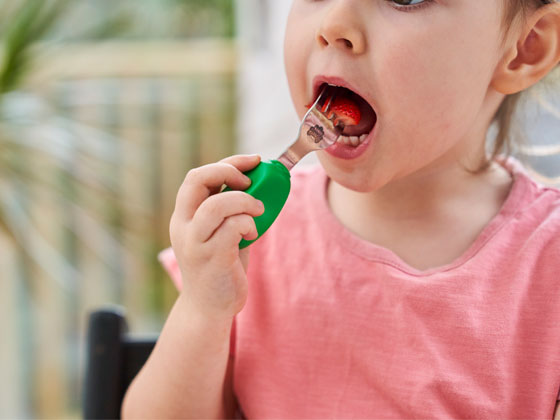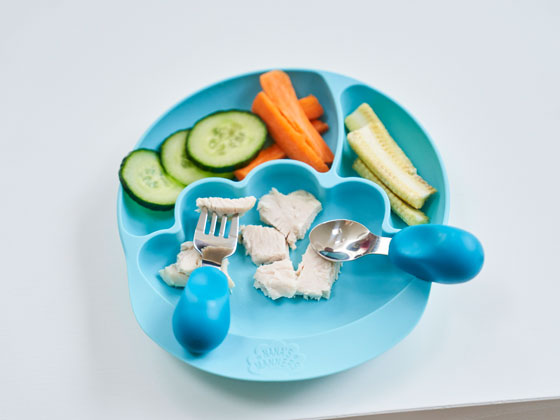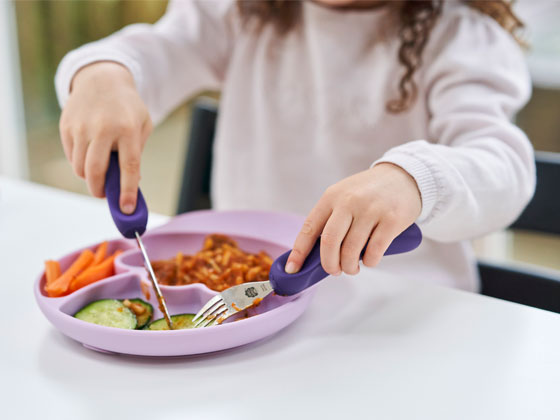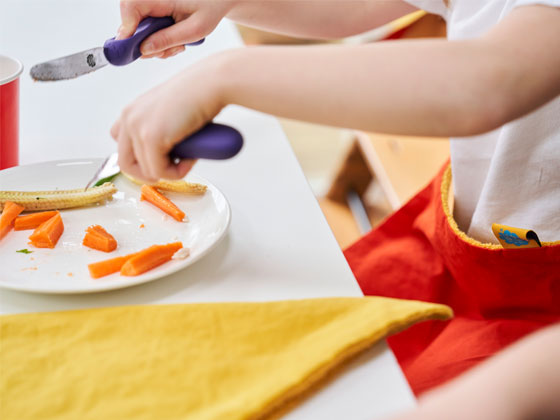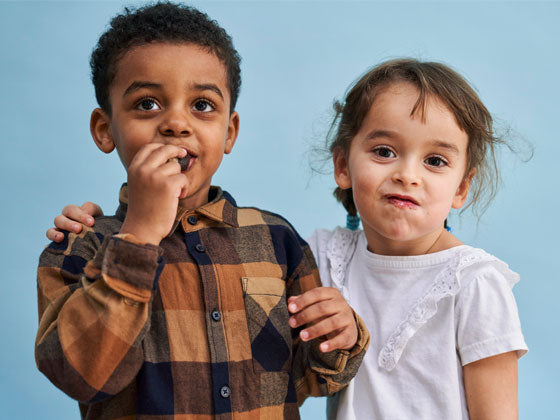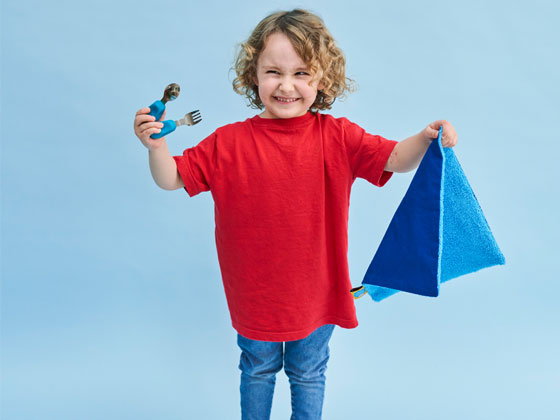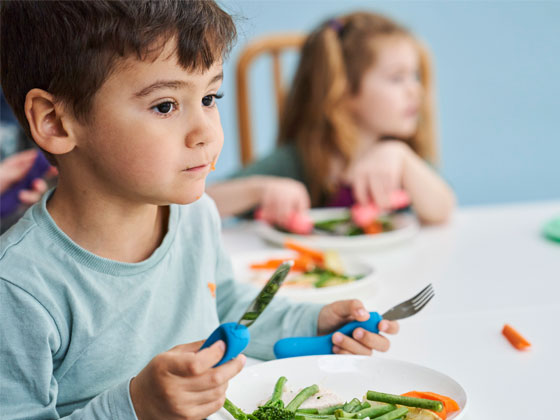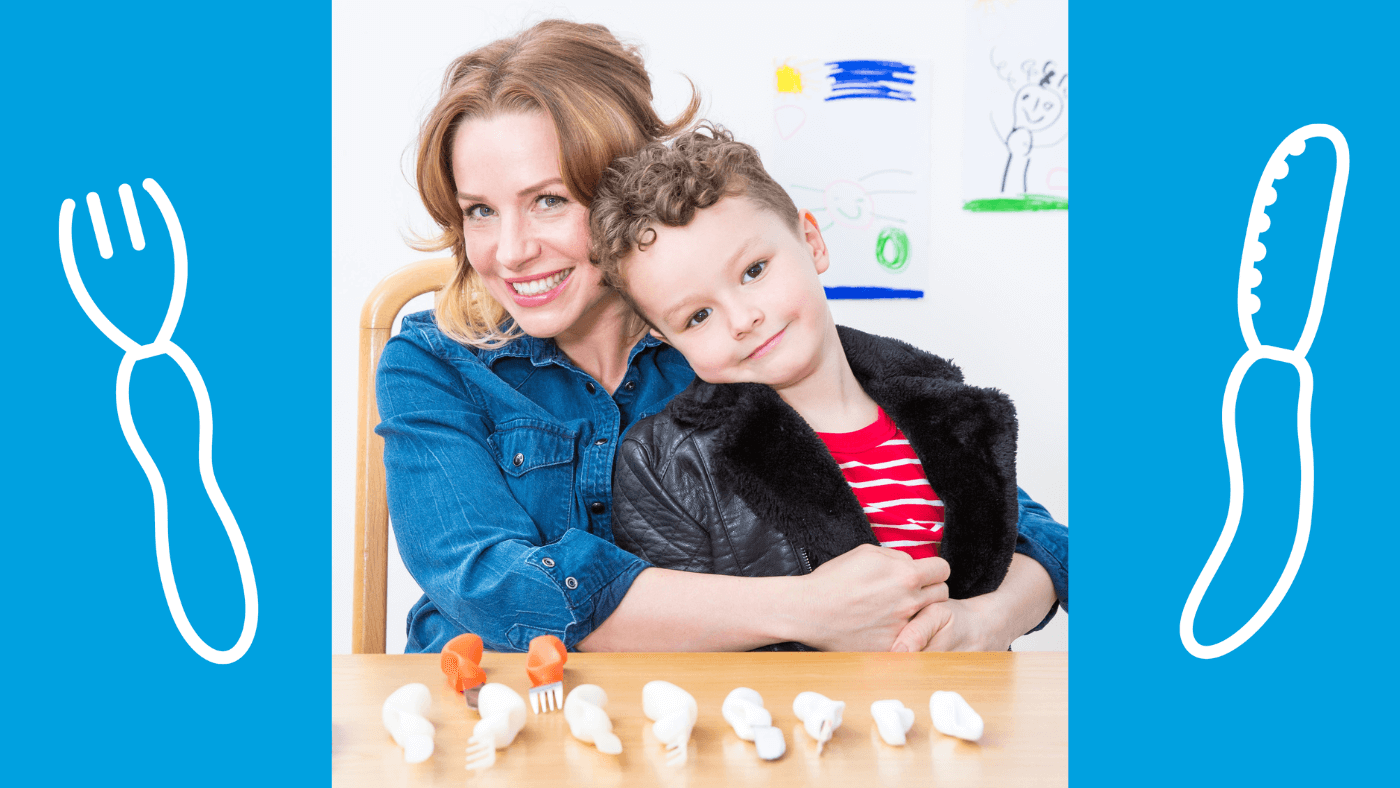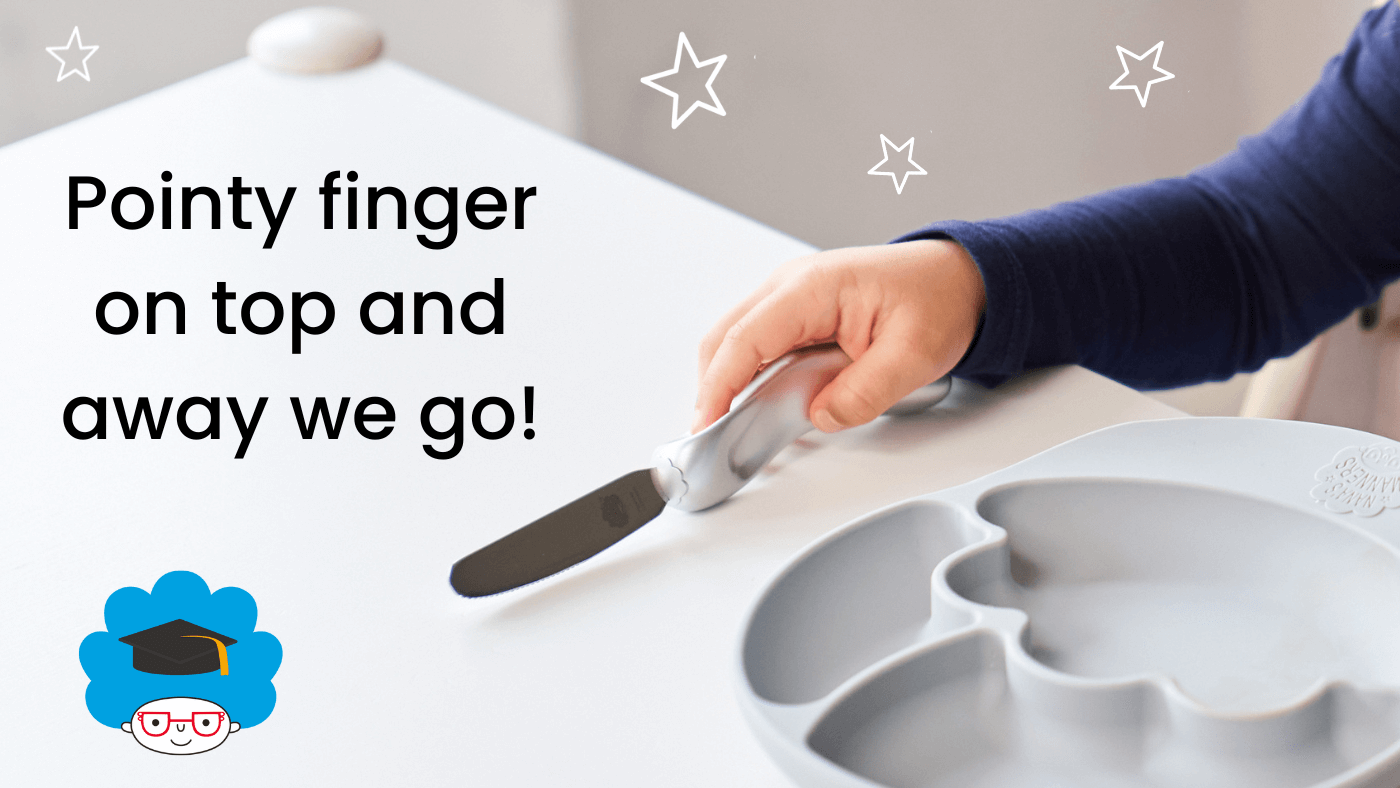Is it just about eating? The short answer is no, there are many other benefits to children's cutlery, extending way beyond the dinner table...
Increase in Confidence & Independence
Much like the first moment you witness your little ones riding their bike without stabilisers, you will see that joy and confidence shine when realising they can hold their ergonomically designed children’s cutlery, cut up their own food, and eat all by themselves for the first time. Their confidence will soar! We spent a long time designing our Stage 3 knife blade to actually work (unlike so many others we had tested when looking at children’s cutlery). The safe design allows children to cut their foods effectively, using the correct ‘sawing’ action from their elbow, something they will delight in! Children love to be ‘big’ and learn to do new things. You will see their whole approach to mealtimes change as they feel empowered!
Eating more of the Food you put in front of them
True story – we received an email from a customer telling us about her previous night’s dinner time, a few days after receiving her son's Nana’s Manners Stage 3 children’s cutlery. She told us her husband and herself were eating salmon, which her son had always refused previously, but as he was now using ‘grown-up’ cutlery they served him the same ‘grown-up’ meal as they were having. She told us her son picked up his cutlery and ate the salmon, no mention of anything. Her and her husband sat silently looking at each other, not daring to mention anything as he just ate without any comment about the fish he’d previously labelled as “disgusting”. They couldn’t believe it! Imagining the scene made us laugh so much – the eye contact saying it all! Many studies have shown that children will eat more of the food in front of them if they find the physical aspect of getting the food from plate to mouth easier.
Grip Development
From the moment they are born, babies are developing their muscles, including those needed to grip. As young as 4 months old they will begin to use the palmar grasp, starting with a few fingers, building to using all of them along with the thumb to hold objects using their whole hand. At around 9-10 months they will begin to develop the first version of the pincer grasp, using their thumb and index finger to pick up and hold objects. Over the next year they will practice and refine these skills, leading to more precise grips and movements. At around 3yrs old they will begin to develop their basic 'tripod' grip and over the next year and beyond, this will continue to refine. The tripod grip uses the thumb and first two fingers, necessary to hold a pencil and write or draw comfortably and effectively. As well as writing, this tripod grip is needed to use a knife and fork effectively. Enter our Stage 3 children's cutlery! Our knife and fork’s unique handle shape supports the development of the tripod grip. Our patent is based around this fact. This is why our children's cutlery is used in so many nurseries and schools, not only to make lunchtimes SO much easier, but to support children’s grip development.

Fine Motor Skill Practice
Fine motor skills involve small muscles working with the brain and nervous system to control movements in areas such as the hands, fingers, lips, tongue and eyes. Developing fine motor skills helps children do things like eating, writing, manipulating objects (such as cutlery) and getting dressed. Research shows that the development of fine motor skills depends on the development of gross motor skills (movements of whole body/larger muscles in the body – crawling, walking) and that a joined-up approach to physical development is vital. Young children need many opportunities to develop fine motor skills alongside gross motor skills so they can become confident in exploring the world around them. Using supportive children’s cutlery is amazing fine motor skill practice. Using a good chair to support them at the dinner table, such as the Stokke Tripp Trap will support their gross motor skills also.
Hand-eye Co-ordination
As the name suggests, this is the ability to perform movements with the hands, being guided by the eyes. It is a joint effort between the sensory system (sight) and motor skills. Any activity in which the hands and eyes work together – catching a ball, writing/drawing and using children’s cutlery – requires co-ordination. Hand-eye co-ordination cannot be ‘taught’ as such, but it is essential that children have access to enough activities to play and explore their environment. Their natural fascination will do the rest! Using children's cutlery at mealtimes allows them to work on this without giving it a second thought!

Muscle Memory
You will see that after using our Stage 3 ergonomically designed children’s cutlery for a while, your child will begin to automatically pick up regular cutlery using the same grip technique. Their hand muscles remember the tripod grip needed! This is great when you find yourself out and about without their special set as this will make those mealtimes easier (though your child will probably prefer you to bring it with you!) We’re sure they’ll still prefer their set of Nana’s Manners children’s cutlery at home, and why not?! It’s more comfortable to hold and use and easier to control!
Who knew there was so much more to children's cutlery than meets the eye?!

